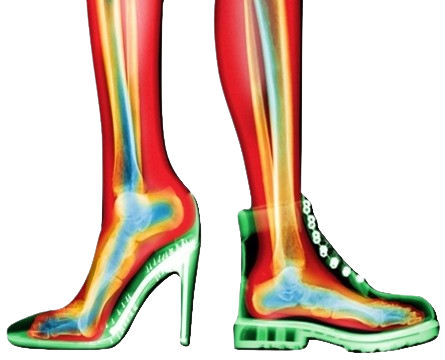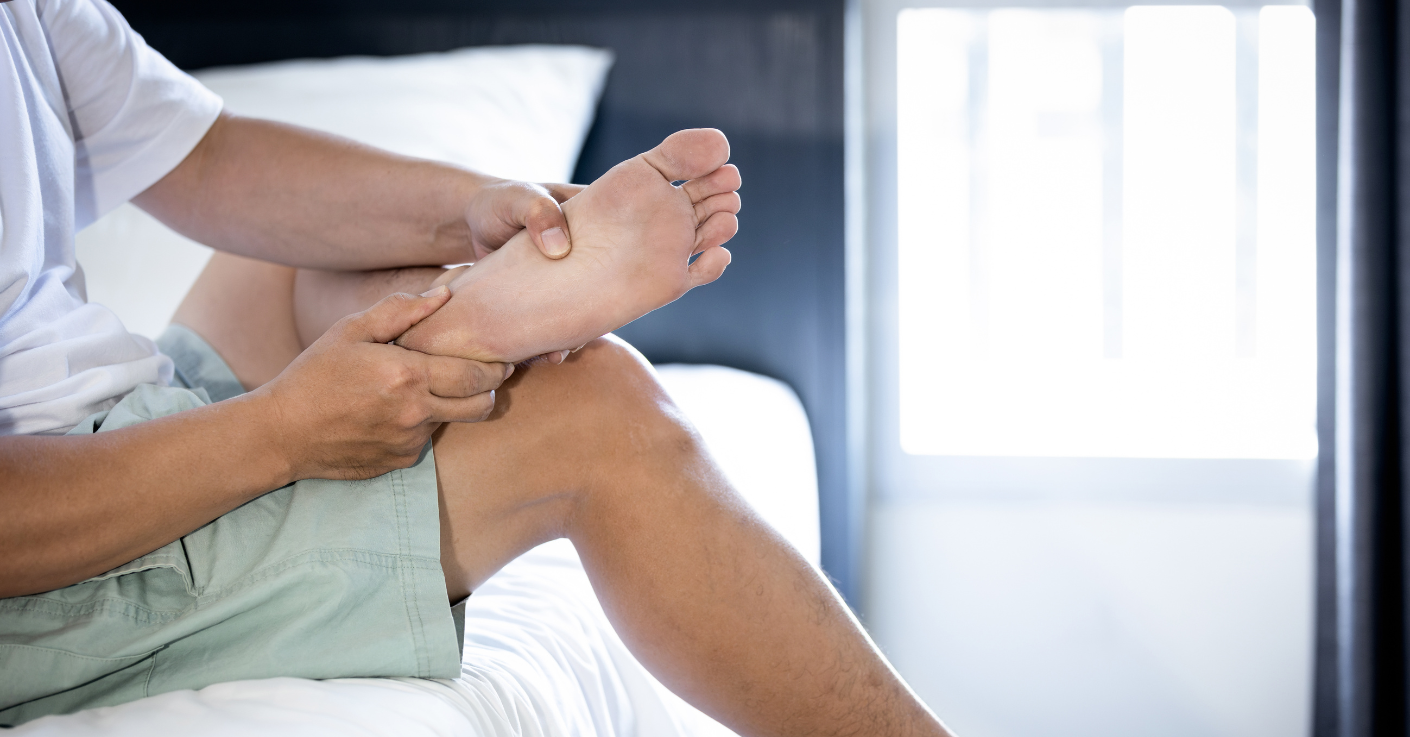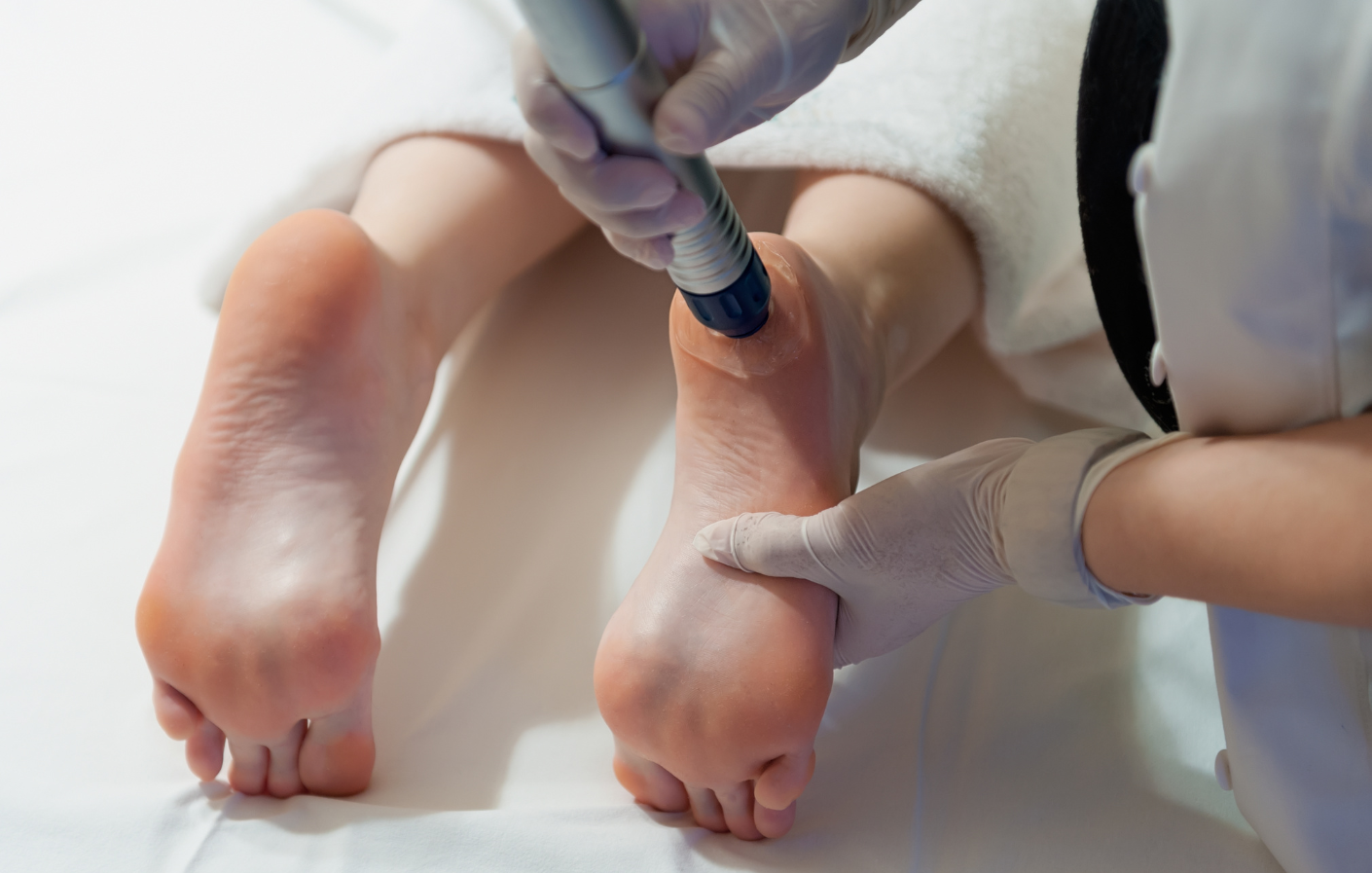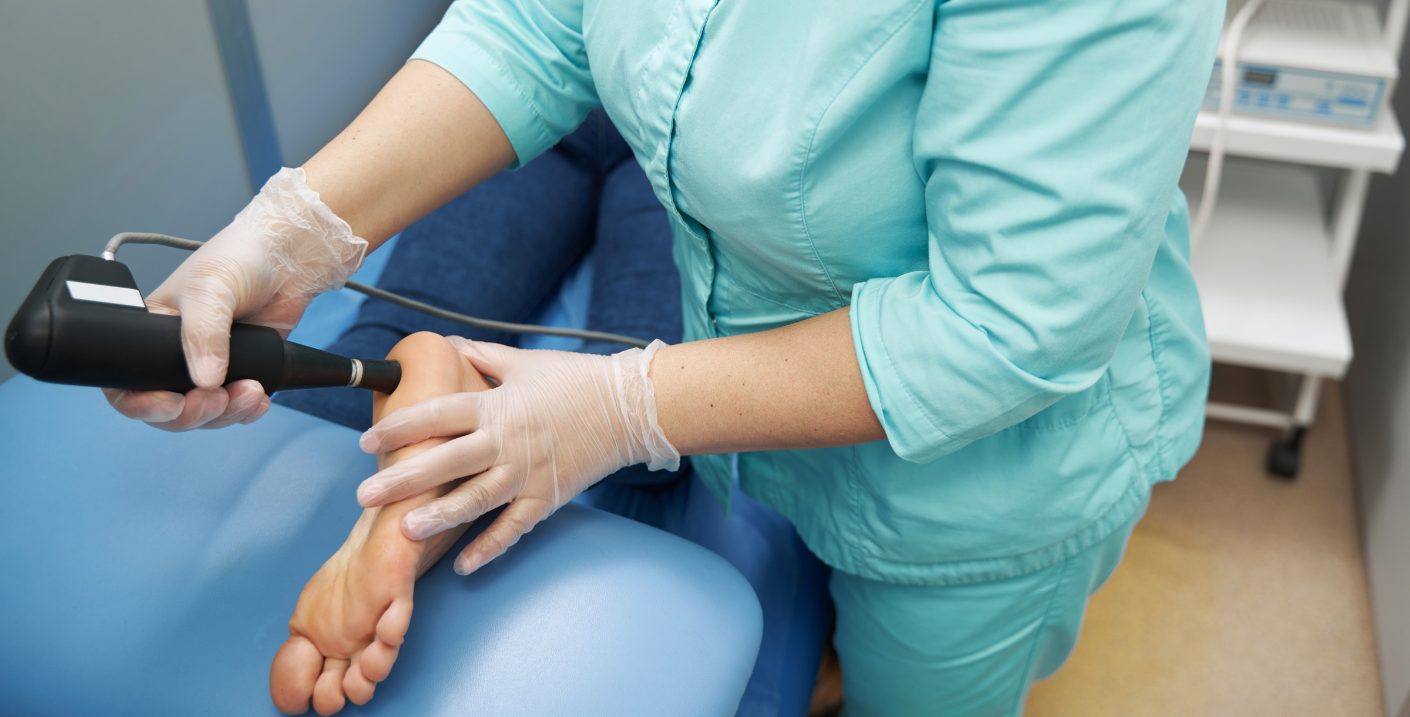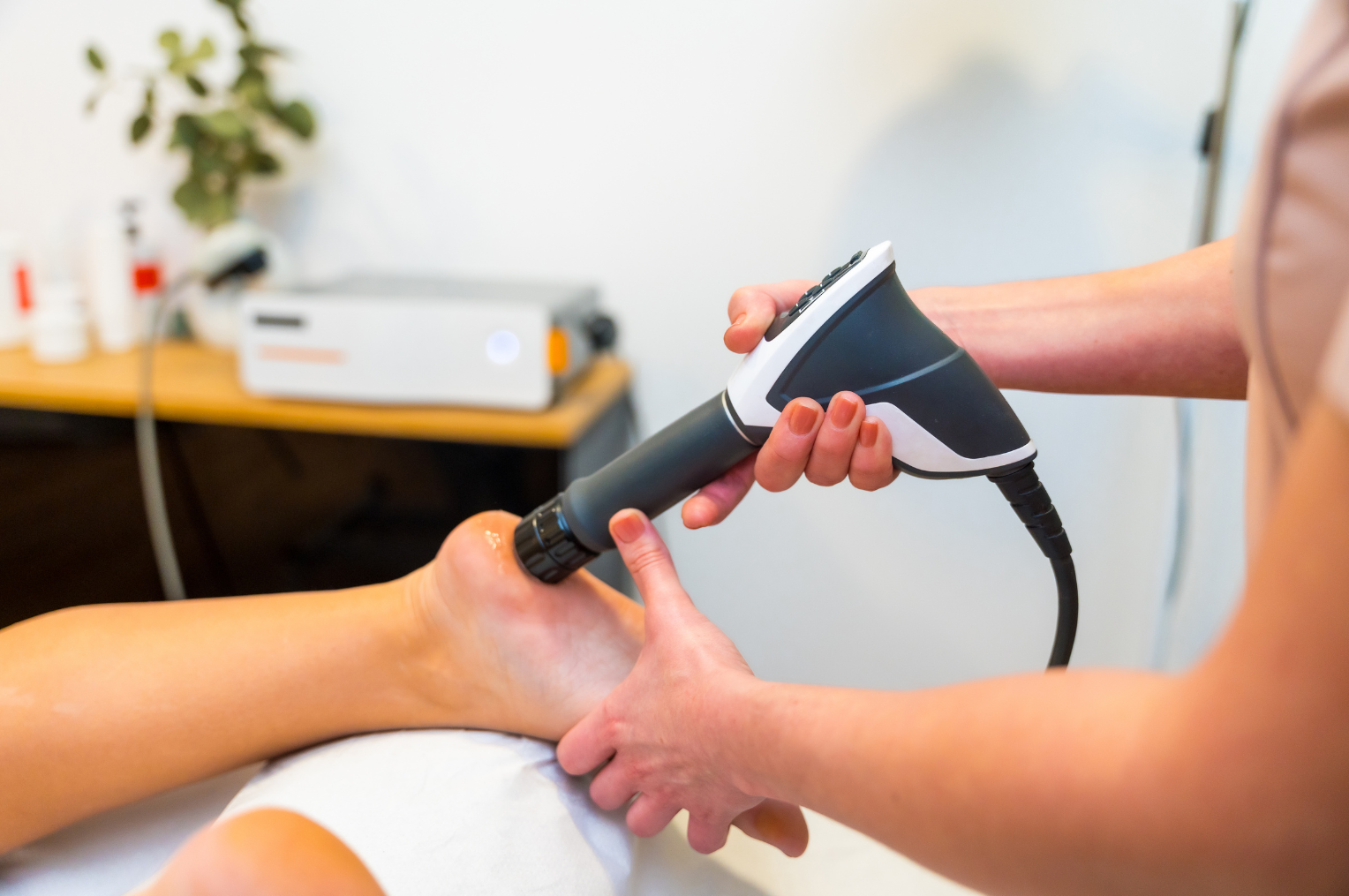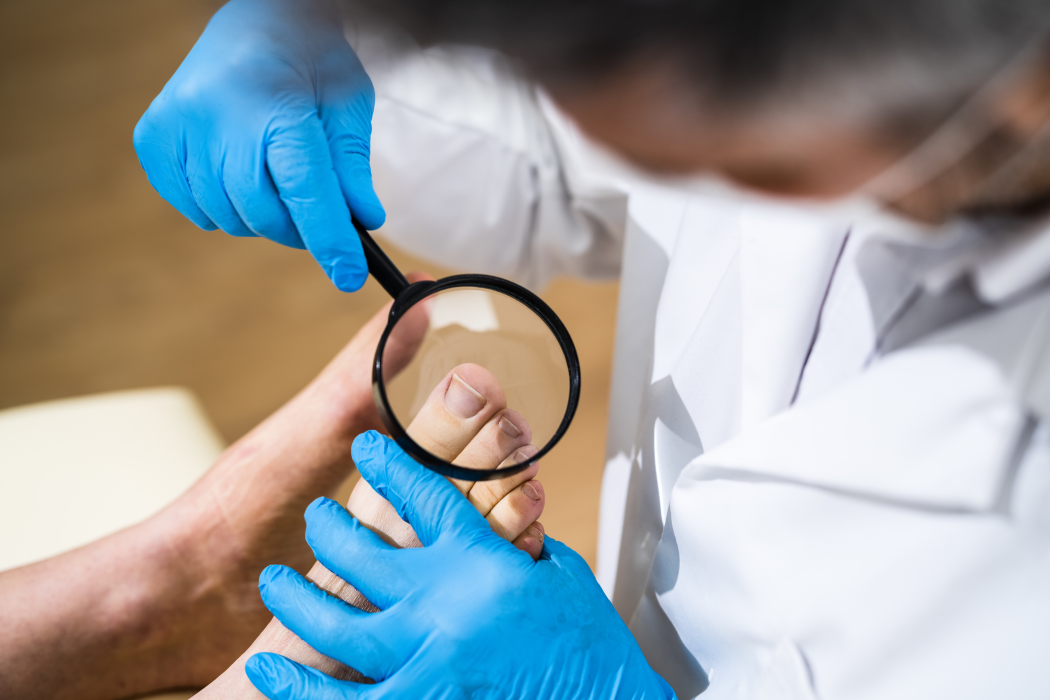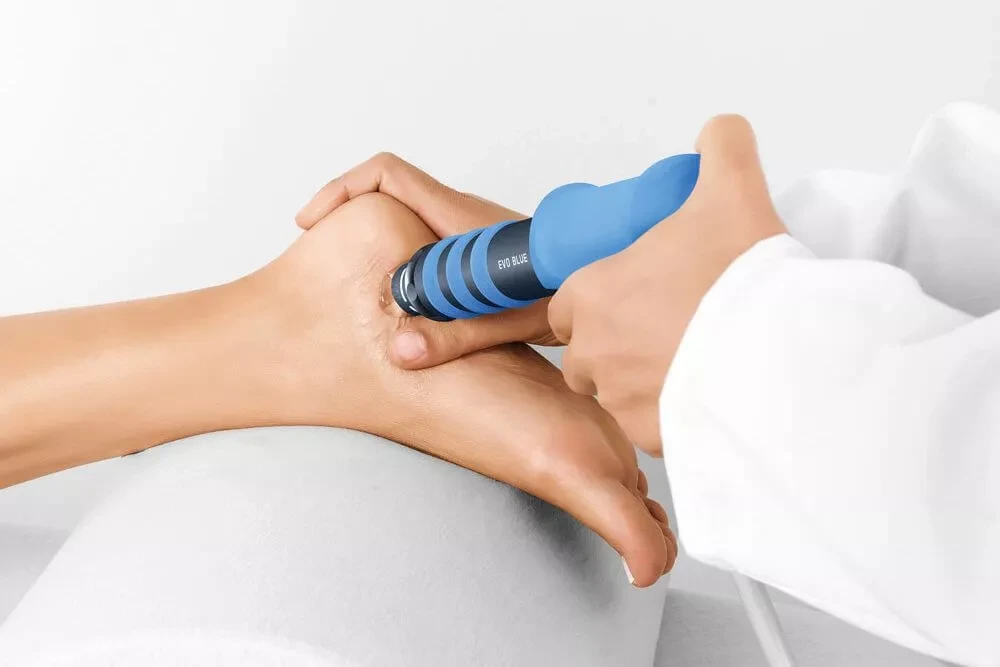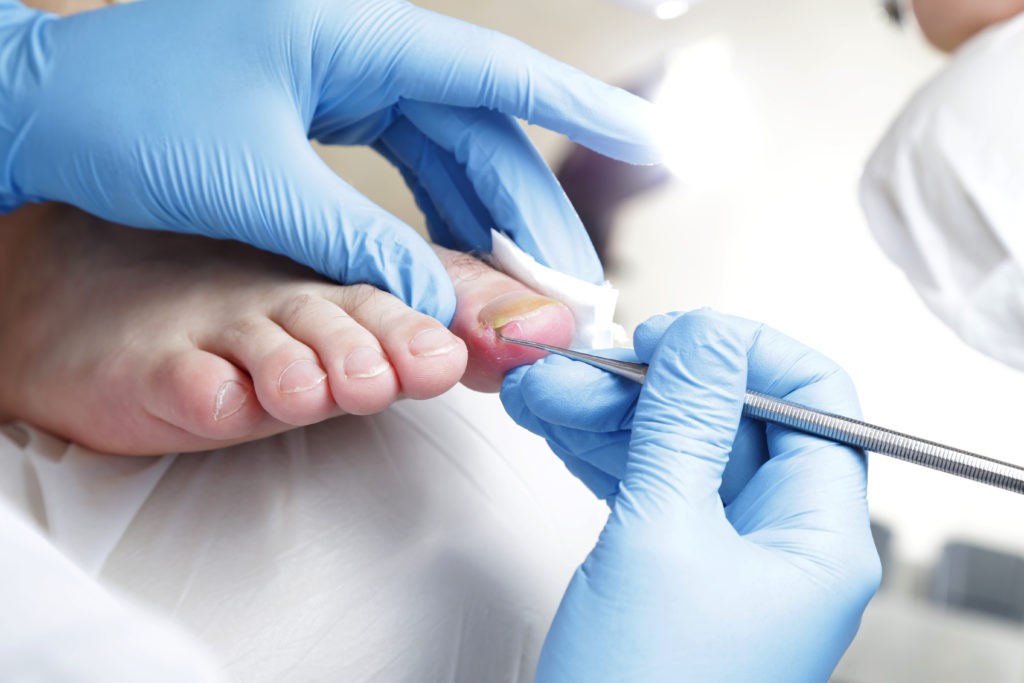Shockwave Therapy
Shockwave therapy is an innovative treatment used in podiatry to help effectively eliminate foot, leg and knee pain while supporting optimal recovery and long-term lower limb health. Shockwave offers a range of health benefits without the need for medication, injections or surgery, making it a preferred treatment option for many.
What Is Shockwave Therapy?
Shockwave treatment involves the use of a handpiece that is held by your podiatrist and placed against a targeted area of your body (such as your heel) to produce high-energy acoustic waves. These waves travel below the skin and to the tendon and muscle beneath, interacting with the damaged tissues and cells to produce healing, restorative and pain-relieving effects. Specifically, shockwave:
- Stimulates collagen to be produced. Collagen is an essential component of repairing certain tissues, so producing more helps optimise the repair process.
- Reduces pain in areas of injury. By reducing the concentration of a neurotransmitter called substance P involved in feeling pain, levels of pain and discomfort are reduced at a faster rate.
- Promotes new blood vessel formation. Blood carries oxygen and nutrients, so the more that gets to an injured area, the better for the repair and recovery process.
- Helps release trigger points in the muscles.
- Helps to break up calcifications in the tendon fibers which may have previously built up from injury, best supporting an optimal recovery.
Is There Pain After Shockwave Therapy?
While the name ‘shockwave’ may make it sound painful, it is actually associated with a very tolerable and often minimal level of pain, with many people noticing pain-relieving benefits in the minutes and days following the appointment. The time the shockwave is activated on the foot usually spans between 3-15 minutes, depending on the injury, how many sites are needed to be treated, the severity of the injury, and other factors. What we – and many of our patients – love about the process is that it is completely non-invasive, meaning it doesn’t require injections, anaesthesia or surgery.
Podiatry Shockwave Therapy
In podiatry, we use shockwave to help with a range of foot and leg pains and problems, including:
- Plantar fasciitis heel pain
- Heel spurs
- Achilles tendinopathy
- Patellar tendon knee pain
- Other tendinopathies
- Shin splints
- Bursitis
- Calf injuries
- Hamstrings
- Trigger points
- Hip pain
- Bone repairs
- Calcifications
It is also shown to have benefits in the areas of wound healing (including in diabetes), peripheral arterial disease, and even spasticity.
Shockwave Therapy For Heel Pain
Shockwave has continually proven its effectiveness with heel pain with a range of studies showing excellent results when shockwave (typically referred to as extracorporeal shockwave therapy – ESWT) is used as an adjunct to treatment. Studies have found that shockwave is effective in the management of plantar fasciitis heel pain, taking into consideration a person’s pain, function and quality of life – exactly what our patients are concerned with.
Shockwave Therapy For Achilles Pain
Shockwave has also been shown to significantly reduce pain and contribute to excellent or good recovery outcomes across many studies. These results were found in longstanding (chronic) Achilles tendinopathy too, so even if you’ve been struggling on and off for years with little success, shockwave is a suitable and recommended treatment option.
Shockwave Therapy For Knee Tendonitis
Research shows that shockwave is an effective and safe treatment for patellar tendinopathy, including in those who have tried other treatment options previously with no success, as well as in those wanting to avoid surgery. Specific studies have proven the ability of shockwave to reduce pain, improve function, and give a good patient satisfaction rating with the treatment.
How Many Sessions Of Shockwave Therapy Will I Need?
This really depends on the location of your injury and its severity. Some people only require 2-3 sessions of shockwave, while others require up to 12. It’s important to note that generally, we do not continue with shockwave sessions if you are not seeing a tangible reduction in pain and improvement in function. This is something we assess and check at each appointment to ensure that shockwave is still working for you and is the best treatment option. We expect to see your pain levels reducing every week, unless you have done something (like engaged in strenuous exercise too early) to set you back.
What Happens During Shockwave?
During a shockwave appointment with our podiatrists here at Perform Podiatry, we first assess your suitability for the treatment, which is largely based on the kind of injury you have and your symptom history. This means we need to diagnose the problem you’re experiencing and the cause of your pain, to ensure that you’ll be able to see the results you want.
Once we’re ready to start shockwave, we’ll start by palpating around the target (injured) area, identifying the target spots that we are going to apply shockwave to, and applying some ultrasound gel to these areas. We then adjust the settings on the shockwave machine to match your rehab needs and place the handpiece against your skin. We have full control over the machine and its settings – including the intensity of the waves that will be moving through your tissues. If you are feeling particularly tender or it’s your first appointment, we may start the first round at a gentle setting so you can become familiar with what to expect from the treatment.
We turn on the machine and fast, frequent shockwaves then radiate out of the handpiece, through the gel and penetrate into the targeted area beneath. One round of shockwave lasts for approximately 60-120 seconds, depending on the recommended number of ‘pulses’ specific to your injury and treatment area. We may complete 2-3 rounds per foot or leg.
After we finish the shockwave therapy, we will also perform any complementary therapies as per your management plan with us, such as strapping the foot to keep it best supported. Your podiatrist will advise you on when to return for your next shockwave treatment (if you need to), which are usually spaced one week apart.
To have shockwave therapy, you must first book an appointment with our podiatrists to diagnose the cause of your pain or injury and ensure that shockwave is likely to be beneficial for you. To do so, please phone us on (09) 523 2333 or book online here.
